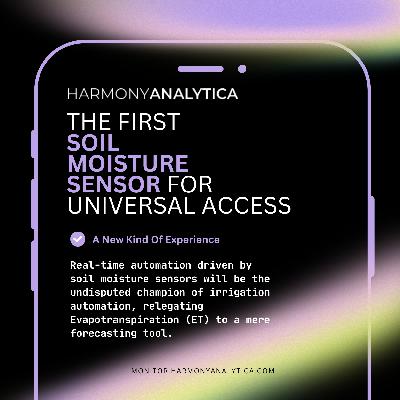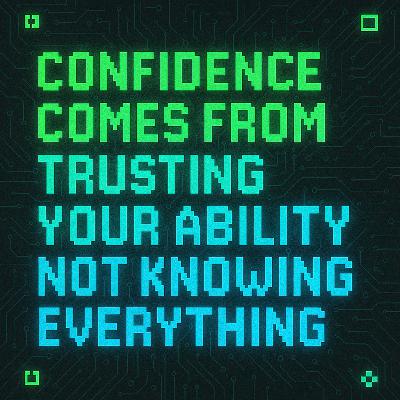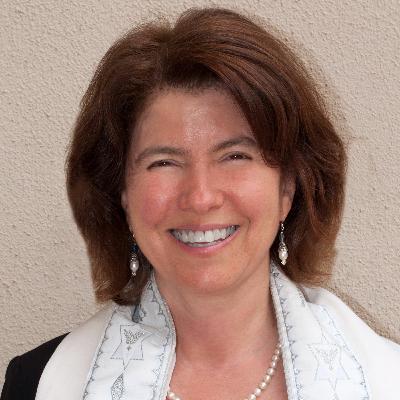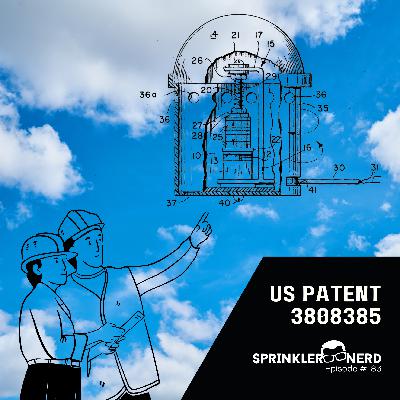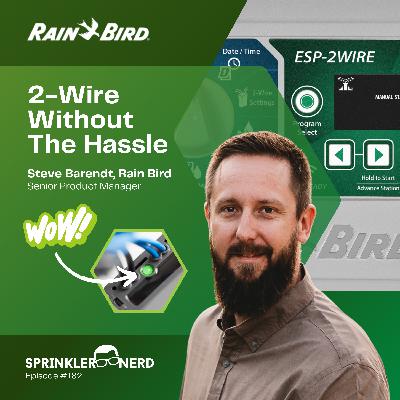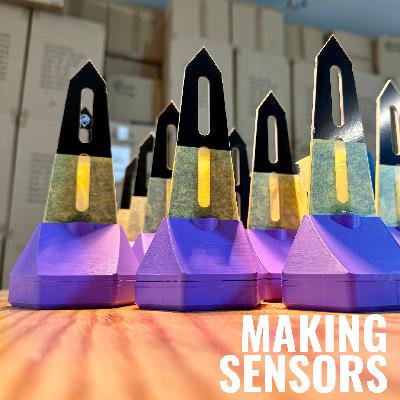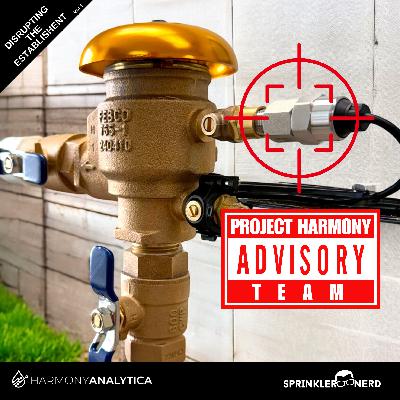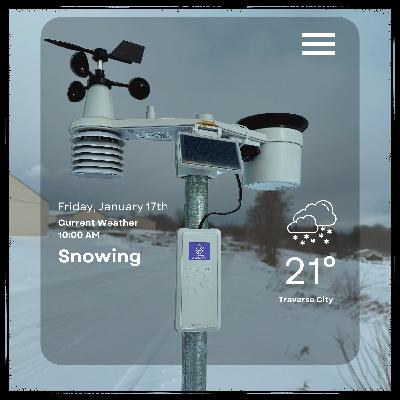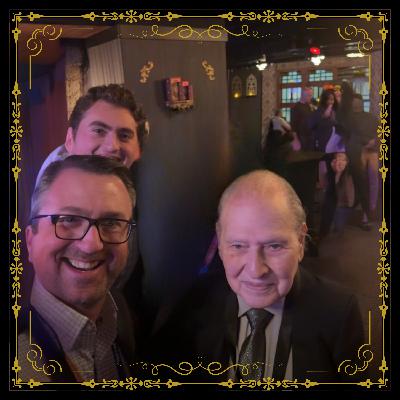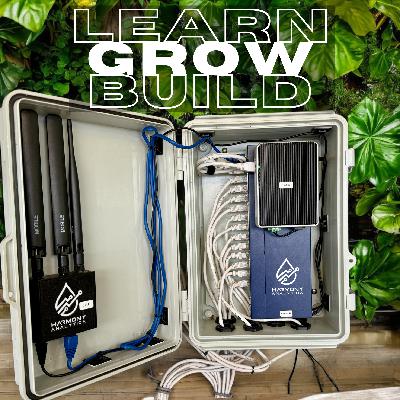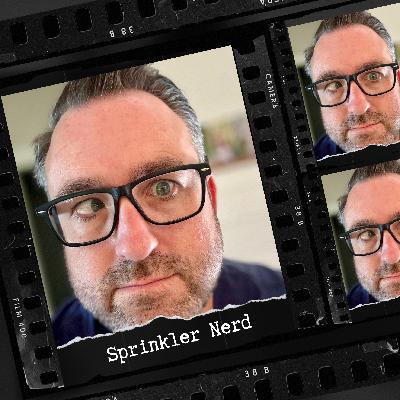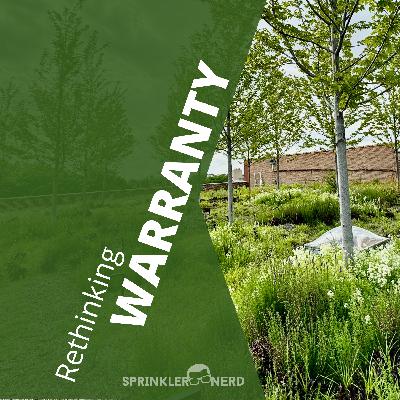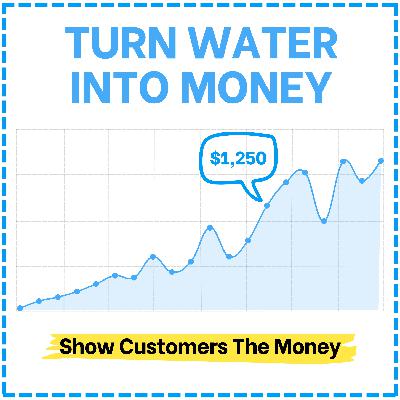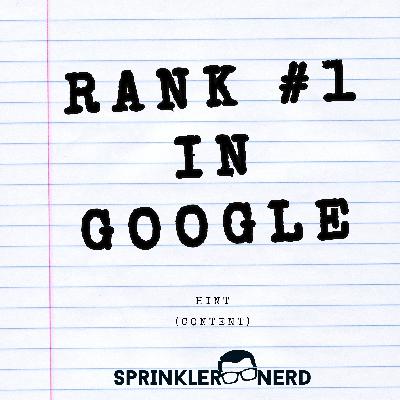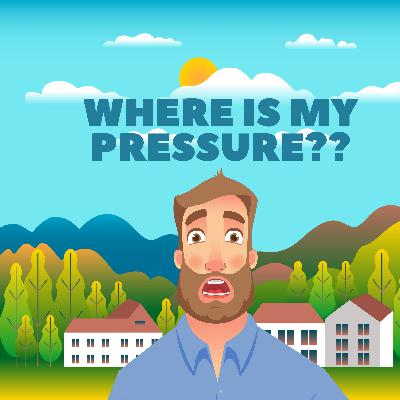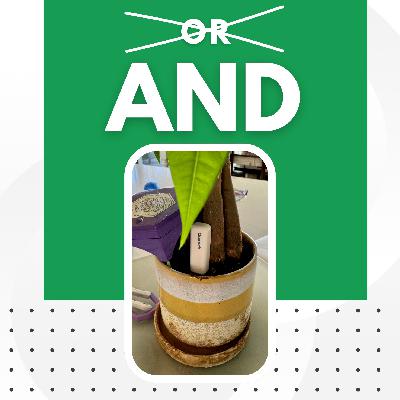#146 - The First Soil Moisture Sensor for Universal Access
Description
Andy: Hello, all you listeners out there in podcast land. I hope everybody's having an amazing day after Thanksgiving. This episode is going out to the world on Friday, which is the day after Thanksgiving. So I hope everybody had an awesome, relaxing end of season, sort of speak in our world and a season day after Thanksgiving.
And this is, we're coming into a big week next week, which is the annual irrigation conference called the IA show. Technically it would be the irrigation association annual conference and at the conference, I will be. Not at a booth or anything formal, but demoing some technology that I've been working on for this last year, which is a long range wireless soil moisture sensor.
And if you are able to join us Tuesday evening, which is the night before the show, I will have plenty of sample. And for those interested to join the beta group, some beta devices. And I thought. What better way to prep for next week than to have another discussion with my good friend, Paul Bassett, who has been helping to advise on the development of the sensor [00:02:00 ] and, uh, the entire, uh, let's call it a project, the entire project.
So Paul, welcome back to the podcast. Oh,
Paul: thanks for having me, Andy. And I can't wait to be one of the first beta users and testers of of this technology. It's been something that our industry's been needing for. Since its inception. So this is going to be one of those technologies that hopefully everyone's going to embrace because it's now going to have the soil moisture sensing, right?
In the palm of your hands.
Andy: That's good in the palm of your hand. When, while he's saying Paul saying that I have one in the palm of my hand and what's pretty awesome too, is I would say you are one of our industry's beta testers. You know, there's a probably just a handful, maybe there's more than a handful, but there's a few people that have always had a liking to test new products and seek out new products in just that early adopter sort of way.
And you are definitely one of them. And this is not your first time, this will not be your first time beta testing soil moisture sensors because you've actually been testing them for, you know, 20 years at this point. At least
Paul: 20 years for sure. And I remember when, when baseline. First came out with their control system and their soil moisture sensors.
And I was ecstatic back then and still to this day on how the technology works. And I really like the taking the wired soil moisture sensor readings and converting it over to now a wireless reading, which is just phenomenal being able to transmit. Out of the ground, what the soil moisture is without a
Andy: wire and to be able to try to connect the dots, so to speak, in terms of hand.
No, it just rained. Let me quickly check my app and [00:04:00 ] see what that did to the soil profile, right? Or, you know, we adjusted some run times. I had the crew adjust some run times. Let me take a look at the app and see what that did to the moisture profile. I think that most of the time when we set a schedule on a controller, start time, run time, day of the week, it's an educated guess, right, using whatever tools we have ability at that moment in order for us to determine what the run time should be to apply the right amount of water.
But there is never been really a tool, I shouldn't say never, there are some, but there's not a universally available tool that anyone could use to then see the results of. What did that adjustment from 30 minutes to 45 minutes look like, or from one hour to 30 minutes? What is it actually doing to the soil?
There isn't a universal tool available that anyone can use easily and affordable to start learning.
Paul: And I like what, what you've done by taking on this particular project and Finding the latest technology that's available and using the, that technology and intertwining it with soil moisture sensors, specifically, most folks aren't really aware of, you know, how this frequency transmits and how it was received and how it gets moved from the device into the palm of your hand.
Why don't you tell us how that
Andy: works? Yeah, there's a stack. We won't go right now all into all the details, but there's a stack of of different technologies that when you stack it together, the data basically passes through the stack and it is delivered to you in the web browser on the phone or the computer.
So the device pings through a gateway, either private or public. Then it goes up to a network server and the network server passes it to an application server. Then the application server is what pushes it to the U. I. So one data point, one point of moisture has to pass through all [00:06:00 ] those little channels along the way in order for the user to then see it on their device.
And that's been, uh, I wouldn't say it's a challenge, but it makes what seems, it makes what seems so simple, actually quite technical under the hood. It is
Paul: very technical under the hood, Andy, for sure. And the way you describe it.
Andy: Yeah, and you gotta sort of learn each of those, each of those, you have to learn each of those, um, pieces of technology.
Because it's not just one of them. And so one of the things that I've done is, you know, gathered a group of people together, i. e. you as one of the advisors and, uh, and Nate as as an engineer, uh, and then a whole slew of other people that are sort of experts in their line of work. So it might be it's the network server developer, or it's the application server developer, or it's the hardware engineer, or it's the application developer.
Um, you know, designer of the actual, uh, capsule, if you will, the hexagon. So there's kind of had to have been a T there's a whole team that's sort of working on this project, uh, to move data from the ground all the way up to the cloud or right into the palm of your hand. And what I think is pretty awesome.
Is that where we, where we've landed started from an idea, you know, that you and I shared back in the spring where we kind of said, man, what would it, if sole moisture sensors were easy, what would that look like? And that's where we came up with this, you know, scan it, drop it, connect it. You know, you don't have to call anyone.
You don't have to activate anything. You can just. Scan it, drop it and connect it. And, you know, so what people will, we'll see is that that is the trying to make it easy for the everyday person has been our goal and both affordable, [00:08:00 ] affordable and easy for the everyday person. So you can just. Grab one out of your truck, scan it, drop it, add it to your account, and you're off and running.
Paul: Andy, it's phenomenal to hear that because it sounds like it's something that's been really needed in our industry to be able to have something this easy to deploy that it sounds like almost everybody could use it. It's not just for the professionals. Is that right?
Andy: That's that's the goal. You know, there are products out there that have 10 X 100 X.
The capabilities of what what I've been building because the The point of what I've been trying to build is something that's for everyone. Not something that is extremely scientific, not something that's research grade, not something that has to be connected to a control platform, but just a soil moisture sensor for the everyday user so they can have the tool to learn.
So they can have the tool to see what happens as a result of their watering patterns. And I really think that that's a missing, a missing piece is that we don't, we are not able to connect the dots on what happens when you apply the water. We apply the water and then we We imagine what happens to it, and then we make some assumptions based on the health of the plant material.
If the plant material is not healthy, then we make another assumption of I either over watered or I under watered, but we don't have a good tool to actually learn about the health. The application or precipitation rate, you know, and as it relates to the runtime on what you do. And so I think that, you know, somebody might say, I don't know really where I want to use this sensor.
It's like, well, just go put it somewhere and you'll quickly have some data that will make you more curious. And you'll want to put another one in another spot because you'll get even more curious and then you'll start bringing in more data. You'll start learning and then you'll become. Over time, a better [00:10:00 ] irrigator because you have the, you know, cause and effect, so

